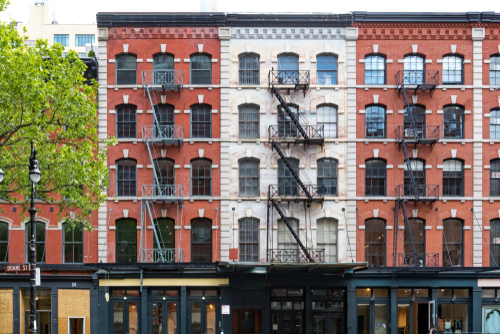
New York City, known for its towering skyscrapers and bustling streets, holds a secret that many of its residents are unaware of. Among the city’s architectural marvels are a number of ‘fake’ buildings, structures that blend seamlessly into their surroundings but serve purposes far removed from what their exteriors suggest.
One such individual who has taken it upon himself to uncover these secrets is Cash Jordan, a popular YouTuber renowned for revealing some of the city’s best-kept secrets. Recently, he embarked on a journey to explore five of these counterfeit buildings, documenting his findings in a video that quickly garnered over half a million views.
The eerie truth about New York FAKE buildings: Inside the very mysterious structures spread throughout the city – and the sinister conspiracy theories that lurk behind their doors https://t.co/d4lEmchDqP pic.twitter.com/qXJONiW3bt
— Daily Mail U.K. (@DailyMailUK) October 29, 2023
Among the buildings Jordan visited was 58 Joralemon Street, a structure that appears to be a typical townhouse but is actually a front for a secret subway ventilation shaft.
Originally built in 1847 as a private residence, the building was purchased by the Interborough Rapid Transit Company in 1907 during the construction of the city’s subway system. Today, it serves as an emergency exit and ventilation point for the subway lines running beneath it.
This is a townhouse in Brooklyn, New York which google blurred because it is one of many fake buildings used by the government to access underground tunnels. pic.twitter.com/AyH4IJXr1v
— Kirby Sommers (@LandlordLinks) February 24, 2023
Another intriguing structure is the Strecker Memorial Laboratory on Roosevelt Island. Constructed in 1892 as a laboratory for a nearby hospital, the building now belongs to the Metropolitan Transportation Authority (MTA). Despite its welcoming exterior, the building’s current purpose remains a mystery to the public.
Perhaps the most enigmatic of all is the windowless skyscraper at 33 Thomas Street. Originally built by AT&T in 1969 as a telephone switch center, the building’s purpose since the late ’90s has been shrouded in secrecy. The lack of windows and high security have sparked numerous conspiracy theories, with some suggesting it serves as a secret base for the National Security Agency (NSA).
In 2016, an investigation by The Intercept claimed to have found evidence supporting the NSA theory, but the agency declined to comment. Despite the speculation, the true purpose of 33 Thomas Street remains unknown, adding to its allure and mystery.
These ‘fake’ buildings serve as a reminder of the city’s complex infrastructure and the lengths taken to maintain its operations while preserving the aesthetic appeal of its neighborhoods. As Jordan’s exploration shows, there’s always more than meets the eye in the bustling metropolis of New York City.












